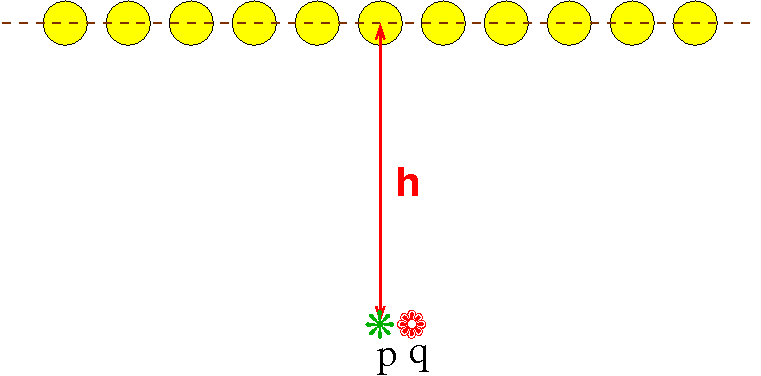List of Homeworks.
Homework 6, due Thurs Oct 23, 2014, 1159pm
Hand in your solution on RPILMS. Each team should submit their solution under only 1 student's name. The other student's submission should just name the lead student. (This makes it easier for us to avoid grading it twice.) For programming exercises, hand in code and screen dumps. We won't run your code, but will use the screendumps to judge how it worked.
- (2) Using the homogeneous representation for a circle of radius 1, what points do t=0, 1, 2, 3, 4, 5 give? Give your answer in Cartesian coordinates.
- (2) Use the homogeneous matrix to project homogeneous points onto the plane x+2y+3z=4, with COP at the origin. What does the point (1,2,3,4) project to? Give the answer as a Cartesian point.
- (4) Repeat the previous question with the COP changed to (1,1,1,1).
- (6) Do exercise 5.6 on page 272 of the text.
- (6 pts, this question will take some thinking).
Imagine that you have an infinitely large room illuminated
by one infinitely long row of point lights. This figure
shows a side view of the room.
The lights are h above the floor and are 1
meter from each other. Assume that the ceiling above the
lights is black and that no light reflects off of anything.
An object at distance d from a light gets illuminated
with a brightness {$ \frac{1}{d^2} $}.
Each point on the floor is illuminated by all the lights,
but more brightly by the closer lights.
A point p directly below a light will be a little
brighter than a point q halfway between two such
points. That is the problem --- we want the floor (at least
the part directly below the line of lights) to be evenly
lit, at least within 1%.
However, the higher the line of lights, the more evenly the
floor will be lit.
Your question is to tell us what is the minimum value for
h so that the line of the floor below the line of
lights is evenly lit within 1%.
E.g., the brightness at p is {$$ \sum_{i=-\infty}^{\infty} \;\;\; \frac{1}{h^2+i^2} $$}

- (Total: 20)*